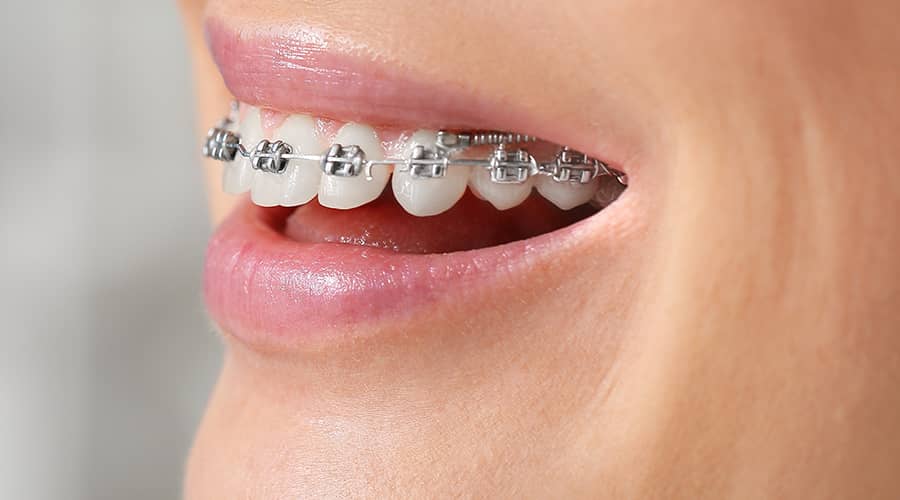
Orthodontists have been adjusting teeth and improving smiles for centuries. The first recorded instance of using metal to fix teeth dates back to 1728, when Pierre Fauchard, a French physician, published “The Surgeon Dentist” detailing ways to correct misaligned teeth.
Braces were introduced in the early 1800s and have improved dramatically since then. Christophe-Francois Delabarre invented the first modern braces for teeth in 1819. While metal braces are still used today, technological advances have led to the development of new materials and methods for straightening teeth. One such innovation is using TADs, a small titanium anchor, to help align teeth.
We work closely with orthodontists to ensure that our patients receive the best possible care. TADs are one of the many tools we use to help give our patients the beautiful, healthy smiles they deserve. Choose us as your oral surgeon in Boulder, CO, Louisville, CO, Lafayette, CO, Broomfield, CO, and Longmont, CO. Please call (303) 444-2255 to book an appointment today.
What Are TADs?
TADs, or temporary anchorage devices, are small metal screws usually made of titanium or titanium alloy placed into the jaw bone to support dental appliances such as braces, clear aligners, and other orthodontic treatments.
They are typically used to reduce treatment time and provide additional orthodontic anchorage when traditional braces or aligners alone are not enough to achieve the desired results. TADs allow the orthodontist to apply force to a certain tooth to pull it in the perfect direction. TADs can also be used for patients as an alternative to headgear, assist in bite correction, and help repair a broken jaw.
TADs work with the basic law of physics; for every action, there is an equal and opposite reaction. The ability for the teeth to move through bone over time is what allows us to move teeth with orthodontics. A TAD is placed so that the orthodontist can design a customized, tooth moving pressure system.
Your orthodontist will refer you to an oral surgeon who will meet with you and evaluate your individual situation. They will discuss the procedure, perform some diagnostic tests, and schedule surgery.
The Surgical Procedure
The procedure is performed in the surgeon’s office using local anesthesia. Your mouth will be cleaned and prepared for the procedure. Once the surgical site is ready, it will be numbed with local anesthesia. Once the area is numb, the TAD is screwed into the proper position. Following the procedure, an x-ray will usually be taken to confirm the position of the TAD.
Recovery
You will be able to resume your normal activities after the procedure. Any discomfort can be relieved with over-the-counter pain medication. You will be given specific instructions on how to care for your mouth. It is important to follow these instructions carefully to ensure a speedy and successful recovery.
Patients must keep the TAD and the gum tissue around it clean to prevent inflammation and infection. Infected and inflamed gum and bone tissue can weaken the TAD. TADs are temporary implants that may also come loose over time and need to be replaced.
Benefits of TADs
There are many benefits to using TADs:
- They enable an orthodontist to move teeth that traditional appliances on teeth cannot accomplish.
- TADs can speed up the treatment process with quicker tooth movement and may be used on patients of all ages in various locations in the mouth.
- TADs can prevent the use of more costly and intrusive dental work.
- Removal is a comfortable procedure that can be performed with only a topical anesthetic.
TADs and Invisalign
If you are considering Invisalign treatment, your orthodontist may recommend the placement of one or more TADs to help achieve the best results. The use of TADs with Invisalign is becoming increasingly common as more patients opt for this clear aligner system.
Your Oral Surgeon In Boulder
If you are considering braces or Invisalign, your orthodontist may recommend the placement of TADs. We work closely with your orthodontist to ensure you receive the best possible care. TADs are a safe and effective way to achieve the results you desire. Choose us as your oral surgeon in Boulder, CO, Louisville, CO, Lafayette, CO, Broomfield, CO, and Longmont, CO. Call (303) 444-2255 to schedule a consultation.
Call UsFrequently Asked Questions
TADs are typically left in for 6 to 9 months but can be removed sooner if treatment is completed. They may also need to stay in longer if more time is needed to correct the issue. Positions may be changed throughout the treatment.
The surgical procedure to place the TAD is generally well tolerated by patients. Most patients report only minor discomfort after the numbing medication wears off, which can be managed with over-the-counter pain medication.
Smoking is not recommended with TADs as it can increase the risk of infection and inflammation.
As with any surgical procedure, there are some risks associated with TAD placement. These include but are not limited to infection, bleeding, nerve damage, adjacent tooth damage and pain.
TADs are placed securely in the bone but can come loose over time. This is more likely to happen if the surrounding gum tissue is not kept clean. If a TAD does come loose, it will need to be replaced.